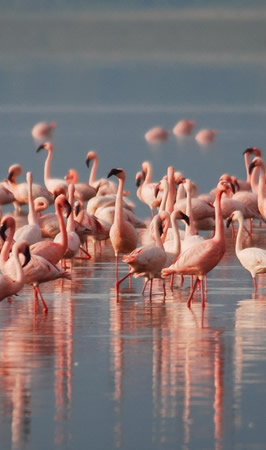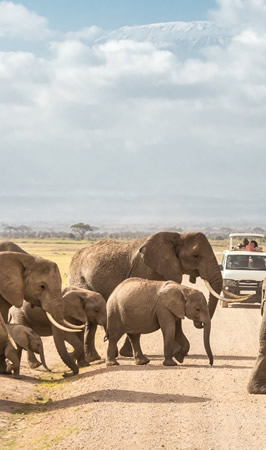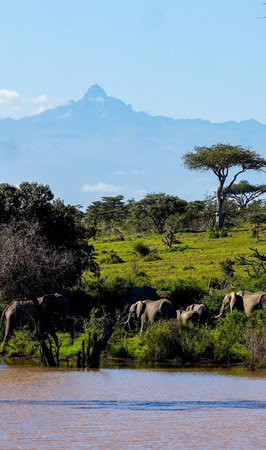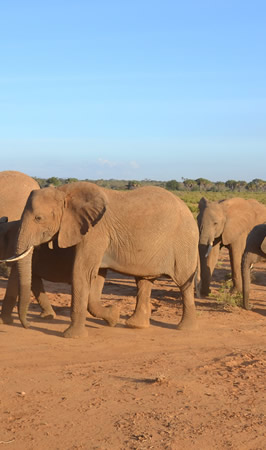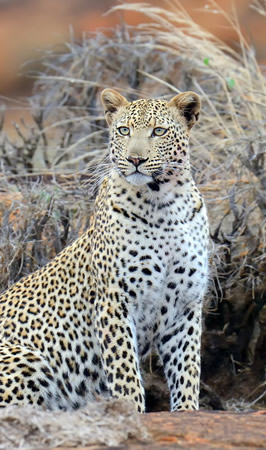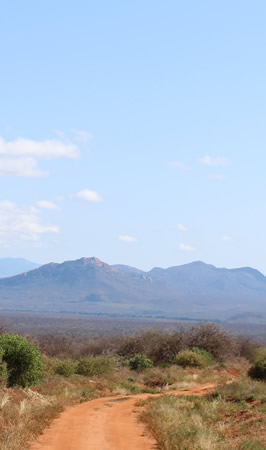Experience the Amboseli National Park
Birding Paradise
Amboseli national park is a home to a high concentration of birds thus making it a birding haven for bird enthusiastic tourists, Amboseli national park is a home to over 400 bird species and these birds include African Sacred Ibises, amaurornis flavirostra chick, Amboseli ostrich , ardea melanocephala, balearica regulorum, bradornis microrhynchus , buphagus africanus1 , eastern chanting goshawk , female struthio camelus massaicus , glareola pratincola , great white pelican , grey crowned cranes, haliaeetus vocifer , kajiado, Kori bustard, male struthio camelus massaicus, melierax poliopterus, numida meleagris, passer gongonensis, platalea alba, ploceus nigricollis melanoxanthus polihierax semitorquatus, pseudonigrita arnaudi , Scopus umbretta, struthio camelus massaicus, struthio camelus massaicus, struthio camelus massaicus, superb starling, Vanellus armatus, Vanellus coronatus, Vanellus crassirostris, Vidua macroura, yellow-billed stork and many more. These birds are easily sighted at the dried bed of Lake Amboseli, watering holes and the savannah grasslands of the park.
Wildlife Highlights
Within the National Park itself, the must-see focal point is undoubtedly the wildlife. At least 400 bird species - with some counts reaching 600! - can be seen, along with up to 80 mammal species. With the mammal glory far surpassing the classic Big Five of rhino, cape buffalo, leopard, lion and elephant, it is truly the elephants that Amboseli is famous for. Though Tim the Tusker, resident of Amboseli and Kenya’s most famous elephant, has recently passed, the Park and its region remains one of the standout areas in the country to see large, active herds. Amboseli National Park is centered around the transient Lake, which goes from waterhole to dust bowl, depending on the season. After heavy rains, it can fill to be a gathering place for thirsty mammals and innumerable flamingoes, returning to a salty, dusty pan (hence its name!) for the majority of the year.
The very scenic Amboseli National Park is one of Kenya's most popular parks. It’s located about 230 kilometres south-east of Nairobi on the Tanzanian border. Amboseli enjoys the backdrop of Africa's most iconic mountain, Mount Kilimanjaro, that lies on the other side of the border with Tanzania. The flat open landscape makes for easy game viewing.
Topography
Amboseli national park is crowned by the backdrop of mountain Kilimanjaro and dominated by short savannah grassland which makes viewing of animals easy, the park has many well maintained trails which facilitate game drives in the park. The most famous trail in the park is the great elephant’s trail from which you can view herds of elephants.
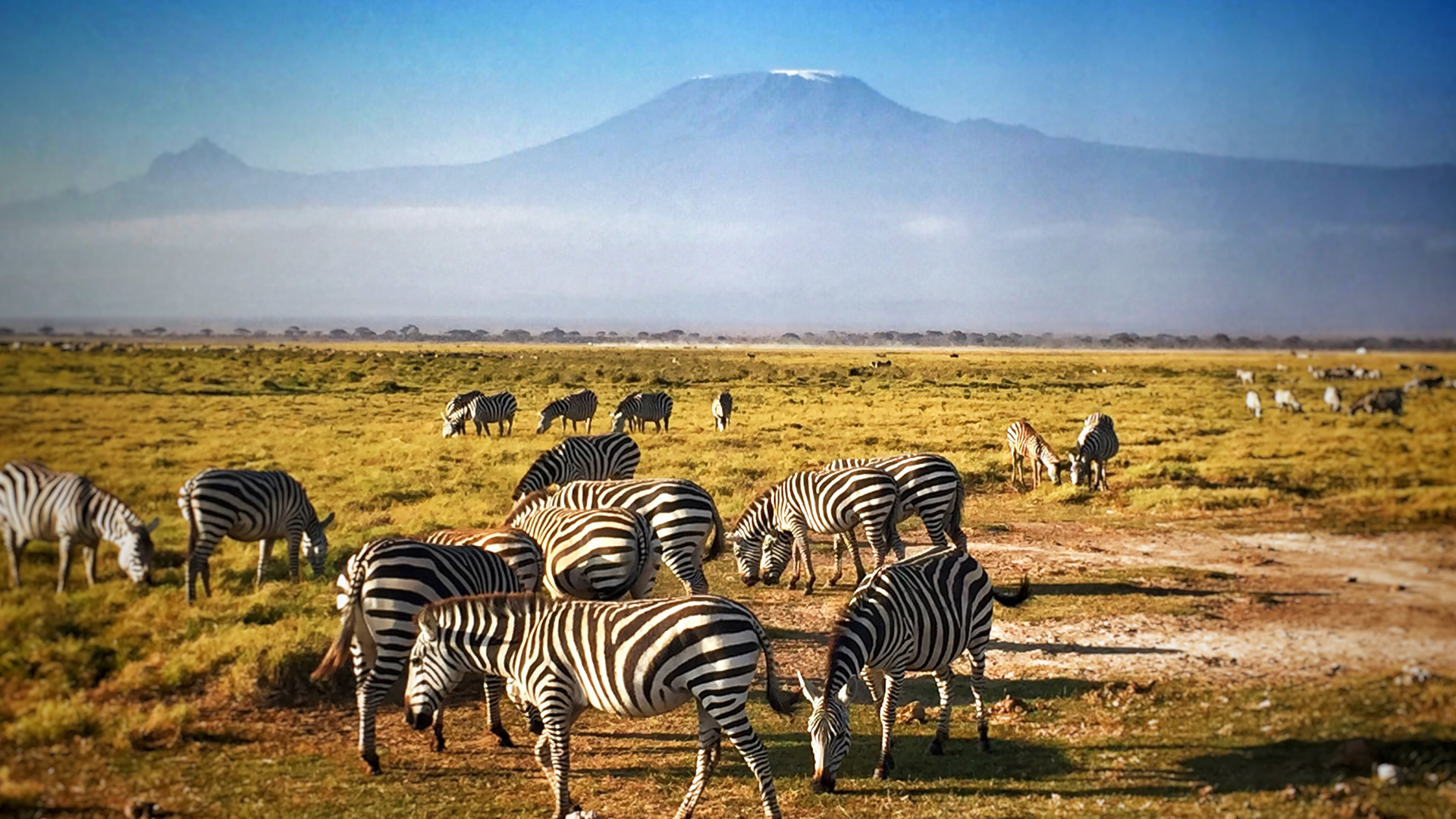
Amboseli is often called the ‘Land of Giants’ – due to the impressive elephants here carrying massive tusks. The animals are set against breathtaking vistas of Mt Kilimanjaro, which makes an awesome backdrop to the small park. Aside from elephants, many plains animals are easy to spot. Fantastic photo opportunities are possible, and early mornings are best for clear views of Kilimanjaro.
Full List of Mammals found in Amboseli National Park:
- Aard-wolf
- African Buffalo
- African Civet
- African Dormouse
- African Elephant
- African Hare
- African Wild Cat
- Angola Free-tailed Bat Inhabits
- Ant Bear
- Banana Bat or African
- Banded Mongoose
- Bat-eared Fox
- Black Rhinoceros
- Black-backed or Silver-backed Jackal
- Black-faced Vervet Monkey
- Blue or Sykes’ Monkey
- Bohor Reedbuck
- Burchell’s or Common Zebra
- Bush Baby Frequents acacia
- Bush Duiker
- Bush or Large-spotted Genet
- Bush Squirrel
- Bushbuck
- Caracal
- Cheetah
- Coke’s Hartebeest or Kongoni
- Common Waterbuck
- Dwarf Mongoose
- East African Hedgehog
- Eland
- Epauletted Fruit Bat Attracted
- False Vampire Bat Colonies
- Fringe-eared Oryx
- Gerenuk
- Giant White-toothed Shrew
- Golden Jackal The rarest of the
- Grant’s Gazelle
- Hippopotamus
- Hollow-faced Bat
- Hunting Dog
- Impala
- Kenya Mole Rat
- Kirk’s Dik-Dik
- Klipspringer
- Lander’s Horseshoe Bat
- Large Grey Mongoose
- Leopard
- Lesser Kudu
- Lesser Leaf-nosed Bat
- Lion
- Marsh Mongoose
- Masai Giraffe
- Neumann’s or Small-spotted Genet
- Pipistrelle
- Porcupine
- Ratel or Honey Badger
- Red Duiker
- Rock Hyrax
- Rousette Fruit Bat Attracted
- Serval
- Short-snouted Elephant Shrew
- Side-striped Jackal
- Slender or Black-tipped Mongoose
- Spectacled Elephant Shrew
- Spotted Hyena
- Spring Hare
- Steinbok
- Striped Ground Squirrel
- Striped Hyena
- Thompson’s Gazelle
- Tree Hyrax
- Unstriped Ground Squirrel
- Warthog
- White-bearded Gnu or Wildebeest
- White-bellied Free-tailed Bat
- White-bellied Tomb Bat
- White-tailed Mongoose
- Woodland
- Yellow Baboon
- Yellow-bellied Bat
- Yellow-winged Bat Hangs in
- Zorilla
Amboseli is a good birding destination and more than 420 species have been recorded here. The swamps are great for water-associated birds such as egrets, herons, pelicans and crowned cranes. Large numbers of flamingos may be present in the Wet seasons (March to May and October to December). The grassland areas offer some interesting ground birds such as Hartlaub’s bustard and the localized Pangani longclaw. The acacia woodland holds some dry country specials such as steel-blue whydah, white-bellied go-away bird and the Von der Decken’s hornbill.
Below is a complete list of most common birds, resident and migrant, that can be found in Amboseli National Park.
- Abdim’s Stork
- Abyssinian Scimitar-bill
- Acacia woodland
- African Black Kite
- African Darter
- African Fire Finch
- African Fish Eagle
- African Golden Oriole
- African Hawk Eagle
- African Hoopoe
- African Jacana
- African Marsh Harrier
- African Marsh Owl
- African Penduline Tit
- African Pied Wagtail
- African Pochard
- African Rock Martin Occurs
- African Sand Martin
- African Scops Owl
- African Snipe
- African Spoonbill
- Amethyst Sunbird
- Angola Swallow
- Anteater Chat
- Augur Buzzard
- Avocet
- Banded Martin
- Banded Tit-warbler
- Bare-eyed Thrush
- Barred Warbler
- Bat Hawk
- Bateleur
- Bearded Woodpecker
- Beautiful Sunbird (black-belrace)
- Black and White Cuckoo
- Black Crake
- Black Cuckoo
- Black Cuckoo Shrike
- Black Rough-wing Swallow
- Black-backed Puff-back
- Black-bellied Bustard
- Black-breasted Apalis
- Blackcap Warbler
- Black-cheeked Waxbill
- Black-chested Harrier Eagle
- Black-faced Sandgrouse
- Black-faced Waxbill
- Black-headed Heron
- Black-headed Oriole
- Black-headed Tchagra
- Black-lored Babbler
- Black-necked Weaver
- Black-shouldered Kite
- Blacksmith Plover
- Black-throated Wattle-eye
- Black-winged Stilt
- Blue-capped Cordon Bleu
- Blue-cheeked Bee-eater Un-
- Blue-eared Glossy Starling
- Blue-headed and Yellow Wagtail
- Blue-headed Coucal
- Blue-naped Mousebird
- Booted Eagle
- Brimstone Canary
- Broad-billed Roller
- Bronze Mannikin
- Bronzy Sunbird
- Brown Harrier Eagle
- Brown Parrot
- Brown-headed Tchagra
- Brown-throated Barbet
- Buffalo Weaver
- Buff-backed Heron or Cattle Egret
- Buff-bellied Warbler
- Buff-crested Bustard
- Bunting
- Button Quail
- Capped Wheatear
- Cardinal Quelea
- Cardinal Woodpecker
- Caspian Plover
- Chestnut Sparrow
- Chestnut Weaver
- Chestnut-bellied Sandgrouse
- Chin-spot Flycatcher
- Cinnamon-breasted Rock
- Cliff Chat Occurs on
- Collared Sunbird
- CommonSandpiper
- Coqui Francolin
- Crested Francolin
- Crimson-rumped Waxbill
- Crombec
- Crowned Crane
- Crowned Hawk Eagle
- Crowned Hornbill
- Crowned Plover
- Cuckoo
- Curlew Sandpiper
- D’Arnaud’s Barbet
- Didric Cuckoo
- Drongo
- Dusky Flycatcher
- Dusky Nightjar
- Dwarf Bittern
- Egyptian Goose
- Egyptian Vulture
- Emerald Cuckoo
- Emerald-spotted Wood Dove
- European Bee-eater
- European Black Kite
- European Black Stork
- European Common Snipe
- European Common Wheatear
- European Golden Oriole
- European Hobby Uncommon
- European Hoopoe
- European Kestrel Winter visitor
- European Marsh Harrier
- European Nightingale
- European Nightjar
- European Pintail
- European Rock Thrush
- European Roller Sometimes
- European Sand Martin
- European Sedge Warbler
- European Shoveler
- European Spotted Flycatcher
- European Swallow
- European Whinchat
- European White-throat
- European Willow Warbler
- Fan-tailed Widow-bird
- Fawn-coloured Lark
- Fiscal Shrike Namanga area
- Fischer’s Sparrow Lark
- Fischer’s Starling
- Fischer’s Straw-tailed Whydah
- Flappet Lark
- Fulvous Tree Duck
- Gabar Goshawk
- Garden Warbler
- Garganey Teal
- Giant Kingfisher Uncommon
- Glossy Ibis Rare visitor
- Golden-breasted Bunting
- Goliath Heron
- Grasshopper Buzzard
- Great Reed Warbler
- Great White Egret
- Greater Flamingo
- Greater Honeyguide
- Greater or White-eyed Kestrel
- Greater Swamp Warbler
- Great-spotted Cuckoo
- Green Pigeon
- Green Sandpiper
- Green Wood Hoopoe
- Green-backed Heron
- Greenshank
- Green-winged Pytilia
- Grey Flycatcher
- Grey Heron
- Grey Hornbill
- Grey Plover
- Grey Tit
- Grey Woodpecker
- Grey Wren Warbler
- Grey-backed Camaroptera
- Grey-backed Fiscal
- Grey-capped Warbler
- Grey-headed Bush Shrike
- Grey-headed Kingfisher
- Grey-headed Silverbill Frelied
- Grey-headed Social Weaver
- Grey-rumped Swallow
- Grosbeak Weaver Swamp
- Ground Hornbill
- Gull-billed Tern
- Hadada Ibis
- Hamerkop
- Harlequin Quail
- Harrier Hawk
- Hartlaub’s Bustard
- Helmeted Guinea-fowl
- Heuglin’s Courser
- Hildebrandt’s Starling
- Holub’s Golden Weaver
- Honey Buzzard Rare visitor,
- Hooded Vulture
- Horus Swift
- Hottentot Teal
- Hunter’s Sunbird
- in varying numbers
- Indigo-bird
- Issabeline Wheatear
- Jackson’s Bustard
- Jameson’s Fire Finch
- Kaffir Rail
- Kenya Grosbeak Canary
- Kenya Violet-backed Sunbird
- Kittlitz’s Plover
- Klaas’ Cuckoo
- Knob-billed Duck
- Kori Bustard
- Lanner Visitor in small
- Laughing Dove
- Layard’s Black-headed Weaver
- Lesser Flamingo Flamingos
- Lesser Grey Shrike Passage
- Lesser Honeyguide
- Lesser Kestrel Winter visitor
- Levaillant’s Cuckoo
- Lilac-breasted Roller
- Little Bee-eater
- Little Bittern
- Little Egret
- Little Grebe
- Little Ringed Plover
- Little Sparrow Hawk
- Little Stint
- Little Swift
- Lizard Buzzard
- Long-billed Pipit
- Long-crested Eagle
- Long-tailed Cormorant
- Long-tailed Fiscal
- Long-tailed Nightjar
- Madagascar Bee-eater Visitor
- Madagascar Squacco Heron
- Malachite Kingfisher Uncommon
- Marabou Stork
- Mariqua Sunbird
- Marsh Sandpiper
- Martial Eagle
- Masai Ostrich Not uncommon
- Masked Weaver
- Montagu’s Harrier
- Moorhen
- Mosque Swallow
- Mottled Swift
- Mourning Dove
- Namaqua Dove
- Night Heron
- Northern Brownbul
- Northern Brubru
- Northern Pied Babbler
- Northern White-tailed Lark
- Nubian or Lappet-faced Vulture
- Nubian Woodpecker
- Nyanza Swift
- Oldoinyo Orok
- Olive Sunbird
- Olive Thrush
- Open-bill Stork
- Orange-bellied Parrot
- Osprey Rare visitor
- Painted Snipe
- Pale Chanting Goshawk
- Pallid Harrier
- Palm Swift
- Paradise Flycatcher
- Paradise Whydah
- Parasitic Weaver
- Parrot-billed Sparrow
- Pearl-spotted Owlet
- Pectoral-patch Cisticola
- Peregrine Visitor in small
- Pied Crow
- Pied Kingfisher
- Pied Wheatear
- Pink-backed Pelican
- Pink-breasted Lark Confined
- Pin-tailed Whydah
- Plain Nightjar
- Pratincole
- Purple Grenadier
- Purple Heron
- Pygmy Falcon Most frequent
- Pygmy Kingfisher In scrub and
- Quail Finch
- Rattling Cisticola
- Red and Yellow Barbet
- Red-back Scrub Robin
- Red-backed Shrike
- Red-billed Duck
- Red-billed Fire Finch
- Red-billed Hornbill
- Red-billed Oxpecker
- Red-billed Quelea
- Red-capped Lark
- Red-capped Robin Chat
- Red-cheeked Cordon Bleu
- Red-chested Cuckoo
- Red-eyed Dove
- Red-faced Apalis
- Red-faced Crombec
- Red-fronted Barbet
- Red-fronted Tinkerbird
- Red-headed Weaver
- Red-knobbed Coot
- Red-rumped Swallow
- Red-tailed Shrike
- Red-throated Tit
- Red-winged Starling
- Reichenow’s Weaver
- Richard’s Pipit
- Ringed Plover
- Ring-necked Dove
- Robin Chat
- Rosy-patched Shrike
- Ruff
- Rufous Chatterer
- Rufous Sparrow
- Rufous-bellied Heron
- Rufous-crowned Roller
- Ruppel’s Vulture
- Ruppell’s Long-tailed Starling
- Sacred Ibis
- Saddle-bill Stork Resident in
- Scaly-throated Honeyguide
- Scarlet-chested Sunbird
- Schalow’s Wheatear Found
- Scimitar-bill
- Secretary Bird
- Senegal Plover
- Shelley’s (Greywing) Francolin
- Shikra
- Silverbill
- Silverbird
- Singing Bush Lark
- Slate-coloured Boubou
- South African Black Flycatcher
- Southern Banded Harrier Eagle
- Speckled Mousebird
- Speckled Pigeon
- Speckled-fronted Weaver
- Spectacled Weaver
- Speke’s Weaver
- Spotted Eagle Owl
- Spotted Morning Warbler
- Spotted Redshank
- Spotted Stone Curlew
- Spotted-flanked Barbet
- Spur-winged Goose
- Squacco Heron
- Steel-Blue Whydah Dry bush
- Steppe Buzzard Winter visitor
- Steppe Eagle
- Stork
- Straight-crested Helmet Shrike
- Streaky Seed-eater
- Striped Kingfisher
- Striped Swallow
- Sulphur-breasted Bush Shrike
- Superb Starling
- Swahili Sparrow
- Swallow
- Taita Falcon Rare visitor. Has
- Taita Fiscal Dry bush country
- Tambourine Dove
- Taveta Golden Weaver
- Tawny Eagle
- Tawny-flanked Prinia
- Temminck’s Courser
- Than Peregrine
- Three-banded Plover
- Thrush Nightingale or Sprosser
- to arid bush areas
- Tropical Boubou Undergrowth
- Tufted Duck Rare winter
- Two-banded Courser
- Variable Sunbird
- Verreaux’s Eagle Owl
- Violet-backed Starling
- Vitelline Masked Weaver
- Von der Decken’s Hornbill
- Vulturine Guinea-fowl
- Wahlberg’g Eagle
- Wahlberg’s Honeyguide
- Water Dikkop
- Wattled Starling Often perch
- Waxbill
- White Pelican
- White Stork
- White-backed Duck
- White-backed Vulture
- White-bellied Bustard
- White-bellied Canary
- White-bellied Go-away-bird
- White-breasted Tit
- White-browed Coucal
- White-browed Robin Chat
- White-browed Sparrow Weaver
- White-crowned Shrike
- White-faced Scops Owl
- White-faced Tree Duck
- White-headed Buffalo Weaver
- White-headed Rough-wing
- White-headed Vulture
- White-naped Raven
- White-necked Cormorant Un-
- White-rumped Swift
- White-throated Bee-eater
- White-throated Robin
- White-winged Black Tern
- White-winged Scrub Robin
- White-winged Widow-bird
- Winding Cisticola
- Wire-tailed Swallow
- Wood Ibis or Yellow-billed
- Wood Sandpiper
- Wooly-necked Stork
- Yellow Bishop
- Yellow White-eye
- Yellow-bellied Eremomela
- Yellow-bellied Waxbill
- Yellow-billed Duck
- Yellow-billed Egret
- Yellow-billed Hornbill
- Yellow-crowned Bishop
- Yellow-fronted Canary
- Yellow-necked Spurfowl
- Yellow-rumped Seed-eater
- Yellow-spotted Petronia
- Yellow-throated Longclaw
- Yellow-throated Sandgrouse In
- Yellow-vented Bulbul



